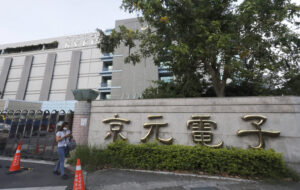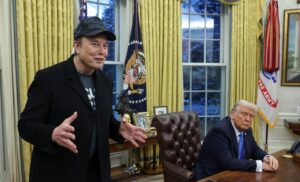
In a significant realignment of its trade strategy, Taiwan is increasingly exporting more to the United States than to China, reflecting a strategic shift away from Beijing amid rising geopolitical tensions. This move is underscored by major investments in the U.S. semiconductor industry and a decrease in investments in mainland China.
Taiwan’s Economic Realignment
The shift is evident across various sectors, from semiconductors to agricultural products. Taiwan’s exports to the U.S. totaled $24.6 billion in the first quarter of 2024, surpassing exports to mainland China, which stood at $22.4 billion. This marks the first time since 2016 that the U.S. has overtaken China as Taiwan’s top export destination.
This change is driven by multiple factors, including geopolitical tensions, economic strategies, and a global push to diversify supply chains in the wake of the COVID-19 pandemic. Taiwan’s efforts to insulate itself from Chinese economic pressure and strengthen ties with the U.S. are central to this realignment.
Major Investments in the U.S.
Taiwan Semiconductor Manufacturing Company (TSMC), the world’s largest chipmaker, announced last month an expansion of its U.S. investments to $65 billion. This decision was bolstered by the Biden administration’s pledge of up to $6.6 billion in incentives, positioning TSMC’s Arizona facilities to produce about one-fifth of the world’s most advanced chips by 2030.
King Yuan Electronics Corp. (KYEC), a Taiwanese firm specializing in semiconductor testing and packaging, announced the sale of its $670 million stake in a venture in Suzhou, China. KYEC cited geopolitical concerns, the U.S. export ban on advanced chips to China, and China’s push for self-sufficiency in technology as reasons for the move.
Legislative Support and Trade Agreements
The U.S. and Taiwan signed a trade agreement last year and are currently negotiating its next phase. U.S. lawmakers have also introduced a bill to eliminate double taxation for Taiwanese businesses and workers in the U.S., further encouraging economic collaboration.
Assistant Secretary of State Daniel Kritenbrink emphasized that these efforts aim to bolster Taiwan’s resilience and deterrent capability, supporting the status quo and deterring potential Chinese aggression.
Broader Economic Shifts
Taiwan’s investments in mainland China have declined to their lowest level in over two decades, dropping nearly 40 percent to $3 billion in 2023. In contrast, Taiwanese investments in the U.S. surged ninefold to $9.6 billion during the same period.
This shift is also reflected in Taiwan’s trade data. The share of Taiwan’s exports to mainland China and Hong Kong fell from about 44 percent in 2020 to less than one-third in the first quarter of 2024. This “very big movement,” as described by Hung Tran, a nonresident senior fellow at the Atlantic Council’s GeoEconomics Center, indicates a strategic reorientation to reduce dependency on China.
Diversification of Investments
Apart from the U.S., Taiwan is diversifying its investments across other regions. TSMC is investing in Japan, another staunch U.S. ally in the region. Foxconn, known for assembling Apple products, is expanding its manufacturing capacity in India, while Pegatron is investing in Vietnam.
These moves are part of a broader strategy to mitigate risks associated with overreliance on China. They also align with global trends as businesses seek to diversify their supply chains to avoid disruptions similar to those experienced during the pandemic.
Agricultural and Other Exports
Taiwan’s trade shift is not limited to technology. The island has more than tripled its exports of tapioca and substitutes, key ingredients in boba milk tea, to the U.S. between 2018 and 2023. Additionally, exports of fruits, tree nuts, and farmed fish to the U.S. have increased significantly.
This diversification underscores Taiwan’s efforts to strengthen its economic resilience by expanding its export markets and reducing its dependency on China.
Strategic Implications
Since the 1990s, Beijing has used favorable economic policies to foster closer ties with Taiwan, aiming to make it harder for the island to assert its independence. However, with the independent-leaning Democratic Progressive Party gaining power in 2016, Taiwan has sought to distance itself from mainland China.
Beijing’s response has included restricting travel by mainland tourists to Taiwan and suspending imports of Taiwanese products like seafood and fruits. These measures have backfired, pushing Taiwan further away.
Ralph Cossa, president emeritus of the Pacific Forum, noted that Chinese President Xi Jinping’s heavy-handed policies have contributed significantly to Taiwan’s successful strategy to distance itself from China. This policy shift is expected to continue under Taiwan’s new president, Lai Ching-te.
Conclusion: Taiwan’s Strategic Shift
Taiwan’s increasing exports to the U.S. and reduced economic ties with China highlight a strategic realignment in response to geopolitical tensions and economic challenges. By diversifying its trade partnerships and investments, Taiwan aims to enhance its economic resilience and reduce its vulnerability to Chinese pressure. As this shift continues, it will have significant implications for the region’s economic and geopolitical landscape.





















Comments are closed for this article!